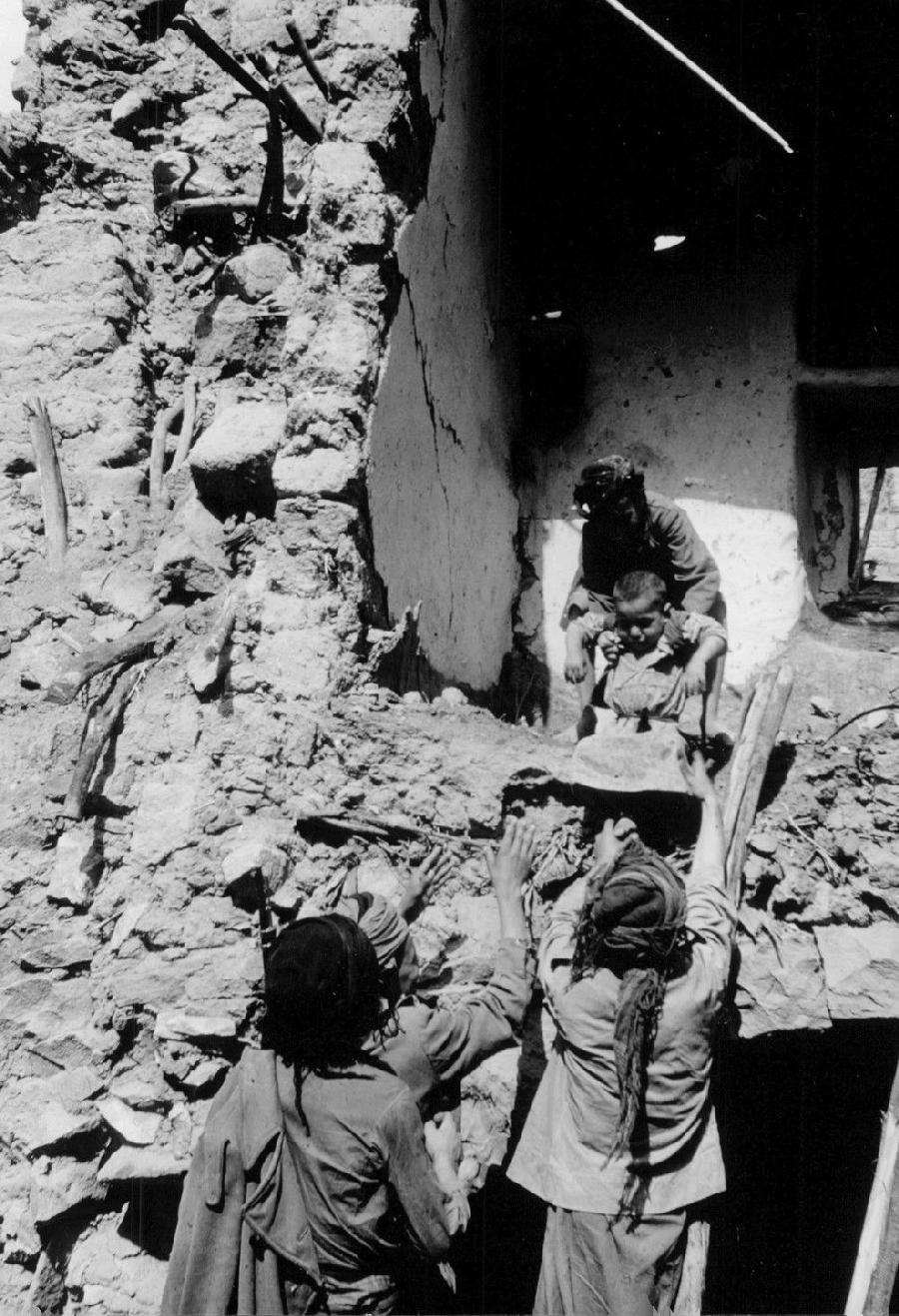
North Yemen: Revolution and Civil War (1962-70)

Figure 1.--This horiffic image shows people helping baby down from a damaged building during the Northern Yemen Civil War. An oler child is crushed in the rubble. The photograph was dated November 19, 1963. The North Yemen Revolution and Civil War was was waged by royalist forces of the Mutawakkilite Kingdom (Imamnate) and republican supporters of the Yemen Arab Republic (1962-70). At the time, northern Yemen was often just refrred to as Yemen because southern Yemen was still the British colony of Aden. The revolution began at Tahrir square in Sana’a. Imam Ahmed was succeeded by his son Crown Prince Mohammed al Badr. Republican Nassarites then seized contril. Imam Ahmed formed a resistance group that received support from Saudi Arabia.
|
|
The North Yemen Revolution and Civil War was was waged by royalist forces of the Mutawakkilite Kingdom (Imamnate) and republican supporters of the Yemen Arab Republic (1962-70). At the time, northern Yemen was often just refrred to as Yemen because southern Yemen was still the British colony of Aden. The revolution began at Tahrir square in Sana’a. Imam Ahmed was succeeded by his son Crown Prince Mohammed al Badr. Eight days later, a pro-Nassar coup against Prince Mohammed removed him from office and inprisoned him. The Republican leader was
Abdullah as-Sallal. He launched a coup d'état which dethroned the newly crowned young Imam Muhammad al-Badr and declared Yemen a republic (1962). The Imam escaped to the Saudi Arabian border and rallied popular support from Northern Shia tribes to retake power, escalating shortly to a full scale civil war. He organized royalist tribes to resist the new government. Yemen became an intra-Arab battlefield. They established the Yemen Arab Republic (YAR). This marked the start of the revolution and deep divisions in Yemeni society. The regime was headed by Co. Abdalla al Salal. Both the Soviet Union and the United States recoconized the regime. Imam Badr managed to escaped from prison and fled to to the north where there was tribal support. He raised tribal forces and got support from Saudi Arabia which oppopsed Nasser's Arab socialism. This launched a civil war which lasted nearly 8 years and would leave not only the country divided, but tribes, clans, and even families divided as well. Yemen discended into civil war.
Egypt supporting the republicans and Saudi Arabia and Jordan the royalists. Egypt with Soviet arms supported the republicans. Egypt sent troops to support the Yemeni Republican government. The Saudis supported the royalists. The situation was further cmplicated when Yemeni republicans split into opposing factions separated by the issue of Egyptian support. The independent government of Premier Hassan al-Amri was ousted by pro-Egyptian elemebts (1966). al-Salal became premier. He ordered Al-Amri's supporters arrested or removed from office. Egypt withdrew its forces from Yemen to prepare for war with Israel. The Saudis agreed to do the same. espite their differences, the Egyptians and Audi agreed on the need to destroy Israel. President Nasser got the war he instigated and it proved to be a disaster for Egypt--the Six Days War (1967). Al-Salal's government was overthrown while he was abroad (November 1967). A three-man republican council was formed with Qadi Abd al-Rahman al-Iryani (one of the anti-Egyptian leaders) as chairman; al-Amri resumed the premiership. Fighting between the republicans and the royalists continued until 1970, when Saudi Arabia recognized the republican goverment. They terminated assistance to the royalists.
A Royalist offensive managed to surround Sana’a (1967). The seige last 70 days. The battle of Sana’a in the end was won by the fire power of Soviet supplied weapons as well as willingnees of the militia and people of Sana’a to resist. One man proved critical in the fight. Qassem Munassar, a key Royalist tribal general switched sides (1968) He brought his Beni Husheich tribe and 60,000 allied fighters over to the Republicans. He was disgusted with the 'tribe of arguing princes' who dominated the Royalist faction. Munassar concluded that the Imamnate simply could not be reformed into a modern, progressive government. Imam Al Badr left Yemen and went into exile in Saudi Arabia (March 1969). Tribal leaders killed Munassar (June 29, 1969).
CIH

Navigate the Children in History Website
[Return to the Main modern Yemeni history page]
[Return to the Main Yemeni history page]
[Return to the Main Yemeni page]
[Return to the Main Middle Eastern page]
[Return to the Main Middle Eastern history page]
[About Us]
[Introduction]
[Biographies]
[Chronology]
[Climatology]
[Clothing]
[Disease and Health]
[Economics]
[Freedom]
[Geography]
[History]
[Human Nature]
[Law]
[Nationalism]
[Presidents]
[Religion]
[Royalty]
[Science]
[Social Class]
[Bibliographies]
[Contributions]
[FAQs]
[Glossaries]
[Images]
[Links]
[Registration]
[Tools]
[Children in History Home]
Created: 1:34 PM 3/21/2016
Last updated: 1:34 PM 3/21/2016



